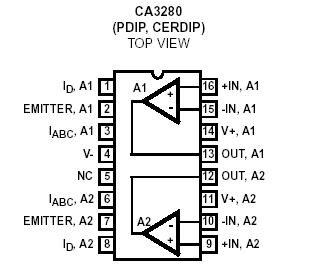CA3280A: Features: • Low Initial Input Offset Voltage: 500µV (Max) (CA3280A)• Low Offset Voltage Change vs IABC: <500µV (Typ) for All Types• Low Offset Voltage Drift: 5µ...
floor Price/Ceiling Price
- Part Number:
- CA3280A
- Supply Ability:
- 5000
Price Break
- Qty
- 1~5000
- Unit Price
- Negotiable
- Processing time
- 15 Days
SeekIC Buyer Protection PLUS - newly updated for 2013!
- Escrow Protection.
- Guaranteed refunds.
- Secure payments.
- Learn more >>
Month Sales
268 Transactions
Payment Methods
All payment methods are secure and covered by SeekIC Buyer Protection PLUS.

 CA3280A Data Sheet
CA3280A Data Sheet







